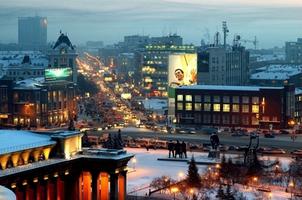As it turned out historically, the population of the city of Novosibirsk varied mainly due to migrant citizens. According to archival information, in 1893, about 740 people lived in the then village of Nikolaev. By 1897 (the moment of the census) there were already about eight thousand inhabitants. The population of Novosibirsk by 1926 reached 120.1 thousand. In 1962, the millionth mark was crossed. By 2004, Novosibirsk began to take third place in Russia in terms of numbers after St. Petersburg and Moscow. In less than seventy years, the number of inhabitants has reached a million. For comparison: for example, Chicago took ninety years to do this, Moscow took more than seven hundred, New York took about 250, and Kiev nearly 900. During the Second World War, the migration rate increased due to the evacuation of people from the western regions of the country. In the 1960-1970s, its role was significantly reduced, which was due to the introduction of strict passport control, as well as restrictions on registration. Since 1992, the population of Novosibirsk began to decrease.

Some statistics of the last century
The conditions of “narrowed” reproduction were established in the city - the one-child family was modal. Among the born in 1982, the first-born were 31.1%, by 1990 - 60.2%, by 2001 - 62.7%. In total, the birth rate in 1982 was 1615, in 1990 - 1471, in 2001 - 1196 children per thousand women throughout the fertile period of their lives. By age structure, the population of Novosibirsk has undergone significant changes. So, in 1962, experts characterize it as progressive, in 1970 as stationary. Over the past few years of the last century, the completion of the formation of a regressive age structure and the deepening of the aging of the population have been noted. A decrease in the proportion of children was also observed.
Statistics and development of Novosibirsk during the first decades of the XXI century
Today, the territory of the city is divided into ten districts, which are unofficially divided into historically developed residential quarters and microdistricts. By the beginning of 2013, administrations of a number of neighboring districts were reorganized into one Central District. As a result, budget expenditures were optimized. Mostly citizens live in Dzerzhinsky, Kirov, Kalininsky, Oktyabrsky, Leninsky districts. According to the latest data, the population in Novosibirsk (2013, Rosstat data) is 1,523,801 people. The area of the city today is more than five hundred square kilometers.
Forecasts and Prospects
The formation of a more favorable demographic situation in the city will become possible in the conditions of stabilization of social life, the implementation of demographic and public policies, economic development, and the provision of able-bodied people with jobs. Of great importance is the state of the environment, affecting the population of Novosibirsk, which today still does not contribute to improving the quality of life, improving health, reducing mortality and morbidity of residents. The solution of these problems will certainly contribute to the stability of demographic processes and structures.